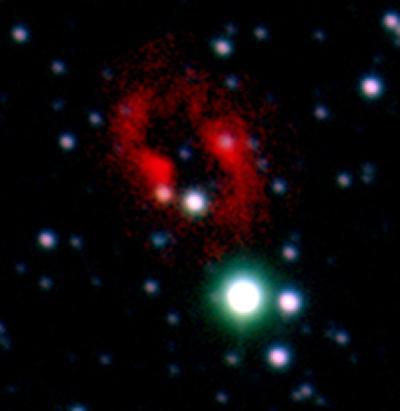Southampton astronomers help catch unique images of exploding star

Images of a rare astronomical event that has not been witnessed for more than 100 years have been captured thanks to the efforts of astronomers from the University of Southampton.
The Southampton team was part of an international study led by astronomers from UCL (University College London) that recorded the explosion of a binary star inside a planetary nebula.
At the ends of their lives, some stars undergo nova explosions, caused by nuclear reactions on their surface. In August 2007, one such exploding star was discovered in a part of the sky that had been observed by the research team. The pre-explosion images showed that this particular star was surrounded by a planetary nebula.
Although several novae are discovered each year in our Galaxy, this is only the second time that a nova has been seen inside a planetary nebula, the first being Nova Persei in 1901. The opportunity to watch in detail as the nova flash interacts with the nebula is a first in astronomy.
The images were taken as part of the Isaac Newton Telescope Photometric HAlpha Survey (IPHAS), the first digital survey of the Milky Way in visible light, and the most comprehensive yet in the light emitted by hydrogen (the most abundant element in the universe). The study was published in the latest issue of Astrophysical Journal Letters.
The University of Southampton involvement in the project was led by Dr Christian Knigge, supported by PhD student Helena Uthas, who obtained some key observations for the team, and Professor Brian Warner, one of the world's leading experts on nova explosions. Dr Knigge comments: “It is great to be involved in the discovery of this exciting object, which has the potential to shed new light on the connection between binary stars, nova and supernovae. It also nicely demonstrates the power of a large-scale observational effort like IPHAS for finding those rare objects that provide new insights into long-standing key problems.”

Dr Roger Wesson, UCL Physics and Astronomy, adds: “The star which erupted was a nova, an event caused when matter is transferred from one star in a close binary system onto its companion, eventually triggering a runaway thermonuclear explosion. The nebula surrounding this nova is a planetary nebula, which must have formed during an earlier phase in the binary star's existence, when the outer layers of one of the companions were expelled.
“The new nova, known as V458 Vulpeculae, provides an important test for models of how stars evolve. Our analysis also suggests that the combined mass of the two stars which produced the explosion could be high enough that eventually, the two stars will spiral into each other, producing a much larger supernova explosion. The role of novae as potential future supernovae has thus far been difficult to analyse in detail, and so V458 Vul provides an opportunity to learn more about this aspect of stellar evolution.”